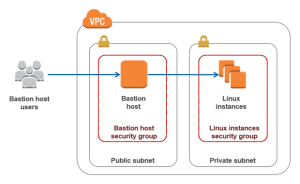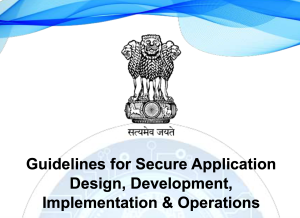
A Man-in-the-Middle (MITM) attack refers to a situation where an attacker positions themselves between two parties who are communicating with each other. The attacker intercepts the communication and can either eavesdrop on the conversation or actively manipulate the data being transmitted.
In a MITM attack, the attacker can secretly monitor the information exchanged between the two parties without their knowledge. This allows the attacker to gather sensitive information such as login credentials, financial details, or personal data. By impersonating one of the parties involved, the attacker can make it appear as if the communication is proceeding normally.
The primary objective of a MITM attack is to gain unauthorized access to sensitive information for malicious purposes. This can include identity theft, unauthorized financial transactions, or unauthorized changes to account settings. In some cases, a MITM attack can also serve as an initial step in a broader cyber attack, such as an advanced persistent threat (APT), where the attacker aims to gain unauthorized access to a secure network.
To illustrate, imagine a scenario where a person is communicating with their bank’s website to log in and access their account. In a MITM attack, the attacker would position themselves between the person and the bank’s website, intercepting the communication. The attacker could capture the person’s login credentials, enabling them to gain unauthorized access to the account or perform fraudulent transactions.
In essence, a MITM attack is comparable to a mail carrier opening an envelope containing your bank statement, extracting your account details, and then resealing the envelope before delivering it to your address.
MITM attacks can progress through two distinct phases: interception and decryption.
Interception:
- Passive Attack: Attackers create malicious public Wi-Fi hotspots without passwords. When a victim connects to such a hotspot, the attacker can intercept and view the victim’s online data exchanges.
- Active Attacks:
- IP Spoofing: Attackers alter packet headers in an IP address to disguise themselves as an application. This redirects users attempting to access the application’s URL to the attacker’s website.
- ARP Spoofing: Attackers associate their MAC address with the IP address of a legitimate user on a local area network using fake ARP messages. This diverts the user’s data intended for the host IP address to the attacker.
- DNS Spoofing: Attackers infiltrate a DNS server and modify a website’s address record. Users accessing the site are redirected to the attacker’s site based on the altered DNS record.
Decryption: Once the interception is successful, the attacker needs to decrypt any two-way SSL traffic without raising suspicion. Various methods can be used for decryption:
- HTTPS Spoofing: The attacker sends a fake certificate to the victim’s browser after the initial connection request to a secure site. The browser verifies the digital thumbprint associated with the compromised application, allowing the attacker to access any data entered by the victim before it reaches the application.
- SSL BEAST (Browser Exploit Against SSL/TLS): This attack targets a vulnerability in TLS version 1.0. The victim’s computer is infected with malicious JavaScript, which intercepts encrypted cookies sent by a web application. By compromising the application’s cipher block chaining (CBC), the attacker can decrypt cookies and authentication tokens.
- SSL Hijacking: The attacker provides forged authentication keys to both the user and the application during a TCP handshake. This establishes what appears to be a secure connection, but the attacker controls the entire session.
- SSL Stripping: The attacker downgrades a HTTPS connection to HTTP by intercepting the TLS authentication sent from the application to the user. The attacker sends an unencrypted version of the application’s site to the user while maintaining a secured session with the application. This allows the attacker to view the user’s entire session.
In summary, a MITM attack progresses by intercepting user traffic through various methods and then decrypting the intercepted SSL traffic to gain unauthorized access to sensitive information.
The example illustrates a man-in-the-middle (MITM) attack scenario involving Alice, Bob, and Mallory. Here are the steps in the attack:

- Alice wants to communicate with Bob securely. She requests Bob’s public key to encrypt her message.
- Mallory intercepts Alice’s request for Bob’s public key. Mallory poses as Bob and sends a forged message to Alice, including Mallory’s own public key instead of Bob’s.
- Alice receives the forged message, believing it to be from Bob, and encrypts her message using Mallory’s public key (thinking it’s Bob’s). She sends the encrypted message back to Bob.
- Mallory intercepts the encrypted message from Alice, decrypts it using her private key, and may modify the message if desired. Mallory then re-encrypts the message using the actual public key she intercepted from Bob when he initially tried to send it to Alice.
- Bob receives the re-encrypted message, thinking it came from Alice. Since it was encrypted with Bob’s real key, he can decrypt it and read the message.
In this example, Mallory successfully performed a MITM attack by intercepting the communication between Alice and Bob. Mallory was able to read and modify the messages exchanged between them by tricking Alice into using Mallory’s public key instead of Bob’s.
This example highlights the importance of ensuring the authenticity of public keys and protecting against MITM attacks. Various techniques and protocols can be employed to defend against such attacks and verify the integrity of communication channels.
To prevent man-in-the-middle (MITM) attacks, here are some recommended practices:
- Use Secure Connections: Ensure that your applications and websites use secure communication protocols such as Transport Layer Security (TLS) and HTTPS. Encrypting data transmitted between the user’s device and the server prevents interception and protects against unauthorized access.
- Verify SSL/TLS Certificates: Always validate the SSL/TLS certificates presented by servers to ensure they are valid and issued by trusted certificate authorities. This verification helps prevent attackers from presenting fraudulent certificates.
- Implement Certificate Pinning: Certificate pinning is a technique where applications store and verify the expected SSL/TLS certificate’s fingerprint or public key. This mitigates the risk of attackers presenting different but still valid certificates for the same domain.
- Educate Users: Educate users about the risks of using unsecured public Wi-Fi networks and advise them to connect to trusted networks or use virtual private networks (VPNs) when accessing sensitive information or conducting transactions.
- Use Strong Authentication: Implement strong authentication mechanisms, such as multi-factor authentication (MFA), to enhance security. MFA requires users to provide multiple forms of identification, reducing the likelihood of unauthorized access even if credentials are intercepted.
- Regularly Update and Patch Systems: Keep your systems and applications up to date with the latest security patches and updates. This helps protect against known vulnerabilities that attackers might exploit in MITM attacks.
- Monitor Network Traffic: Employ network monitoring tools to detect suspicious activities and abnormal network traffic patterns that may indicate the presence of a MITM attack. Regularly review logs and monitor for any unauthorized access attempts.
- Perform Security Audits: Conduct regular security audits and assessments to identify and address any vulnerabilities in your systems. Engage security professionals to perform penetration testing and vulnerability assessments to uncover potential weaknesses.
By following these preventive measures, you can significantly reduce the risk of MITM attacks and enhance the overall security of your applications and communication channels.
Defense and detection mechanisms play a crucial role in mitigating man-in-the-middle (MITM) attacks. Here are some common methods used for authentication, tamper detection, and forensic analysis:
Authentication:
- Public Key Infrastructure (PKI): Implementing PKI with secure communication protocols like Transport Layer Security (TLS) helps authenticate the identity of the server and establish a secure connection.
- Mutual Authentication: Require both the server and the client to authenticate each other’s identities to prevent MITM attacks. This ensures that both parties are verified before establishing a connection.
- Attestations: Verbal communication or recorded media can be used to verify the authenticity of communication, making it harder for attackers to impersonate legitimate entities.
- HTTP Public Key Pinning (HPKP): By pinning the server’s public key hashes, clients can ensure that subsequent transactions use only the expected keys, preventing attacks where the certificate authority is compromised.
- DNSSEC: Deploying DNS Security Extensions (DNSSEC) can help detect and prevent DNS spoofing attacks by authenticating DNS records and ensuring the integrity of the DNS data.
Tamper Detection:
- Latency Examination: Monitoring response times can help detect abnormalities that may indicate the presence of a MITM attack. Significant delays in transaction times can be a sign of interference.
- Quantum Cryptography: In theory, quantum cryptography can provide tamper-evidence through the no-cloning theorem, ensuring the integrity of the communication channel.
Forensic Analysis: In the event of a suspected MITM attack, forensic analysis can be performed on captured network traffic to determine if an attack occurred and identify the source. Factors such as IP addresses, DNS names, certificates (including revocation status and changes), and consistency across different clients can provide valuable evidence for analysis.
It’s important to note that a combination of these techniques, along with regular security updates, user education, and monitoring, can significantly enhance the detection and prevention of MITM attacks.





